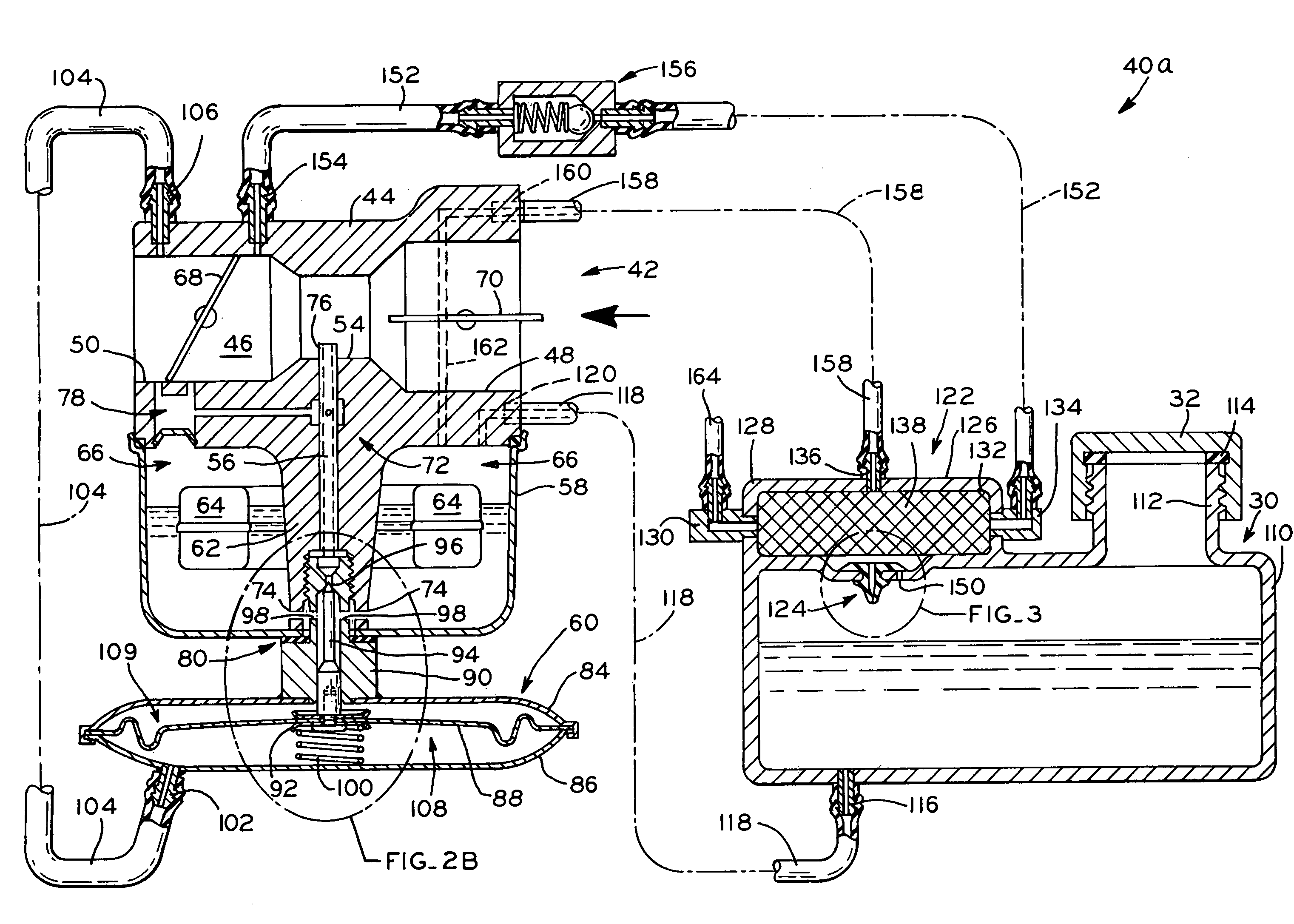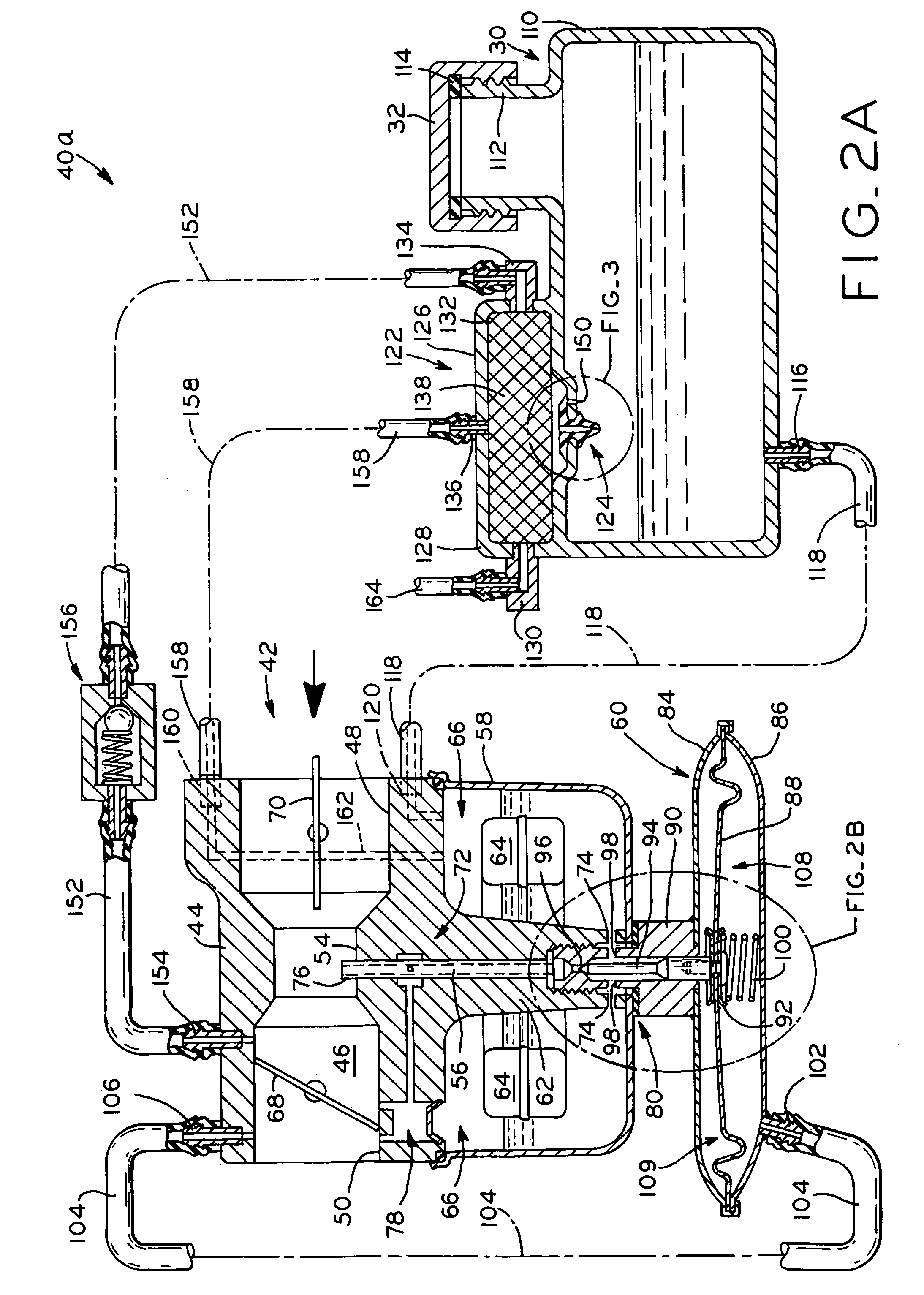Evaporative emissions control system for small internal combustion engines
a technology of emission control system and internal combustion engine, which is applied in the direction of condensed fuel collection/return, charge feed system, non-fuel substance addition to fuel, etc., can solve the problem that fuel vapors may escape from the fuel supply system to the atmospher
- Summary
- Abstract
- Description
- Claims
- Application Information
AI Technical Summary
Benefits of technology
Problems solved by technology
Method used
Image
Examples
first embodiment
[0035]Referring to FIG. 2A, an evaporative emissions control system 40a in accordance with the present invention is shown, which includes a float bowl-type carburetor 42. Carburetor 42 generally includes carburetor body 44 having an air intake passage or throat 46 with inlet end 48 connected to an air filter (not shown), and outlet end 50 connected to the intake manifold 52 (FIG. 1) of engine 28. Throat 46 includes a constricted portion or venturi 54 proximate the nozzle of main fuel jet 56 through which liquid fuel is drawn from fuel bowl 58 of carburetor 42 into throat 46 for mixing with intake air in a known manner during running of engine 28. Fuel bowl 58 is connected to carburetor body 44 by valve housing 60 attached to stem portion 62 of carburetor 42 in the manner described below. Fuel bowl 58 contains a volume of liquid fuel therein, and includes an inlet valve (not shown) actuated by float 64 for metering liquid fuel into fuel bowl 58 in a known manner from fuel tank 30 via...
second embodiment
[0052]Referring to FIG. 4A, evaporative emissions control system 40b according to the present invention is shown. Many of the components of evaporative emissions control system 40b, including fuel tank 30 and charcoal canister 122, for example, are identical to those of evaporative emissions control system 40a described above, and identical reference numerals have been used to denote identical elements therebetween.
[0053]Evaporative emissions control system 40b includes diaphragm carburetor 170, which generally includes carburetor body 172 having throat 174 with inlet end 176 connected to an air filter (not shown), and outlet end 178 connected to the intake manifold 52 (FIG. 1) of engine 28. Throat 174 includes a constricted portion or venturi 180 proximate the main fuel jet 192 through which liquid fuel is drawn into throat 174 for mixing with intake air in a known manner during running of engine 28. Carburetor 170 additionally includes throttle valve plate 182 downstream of ventur...
PUM
 Login to View More
Login to View More Abstract
Description
Claims
Application Information
 Login to View More
Login to View More - R&D
- Intellectual Property
- Life Sciences
- Materials
- Tech Scout
- Unparalleled Data Quality
- Higher Quality Content
- 60% Fewer Hallucinations
Browse by: Latest US Patents, China's latest patents, Technical Efficacy Thesaurus, Application Domain, Technology Topic, Popular Technical Reports.
© 2025 PatSnap. All rights reserved.Legal|Privacy policy|Modern Slavery Act Transparency Statement|Sitemap|About US| Contact US: help@patsnap.com



